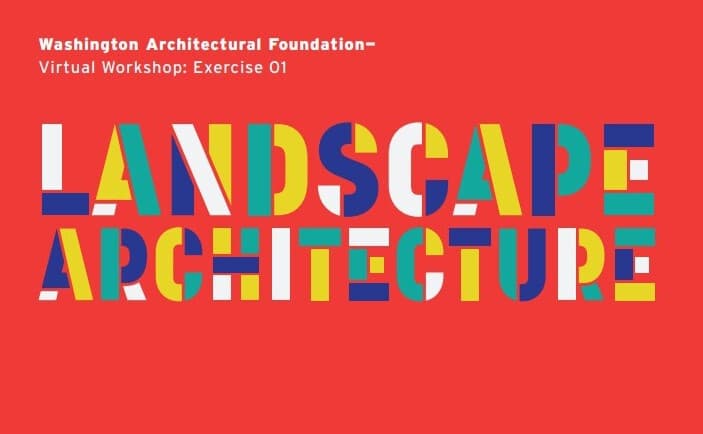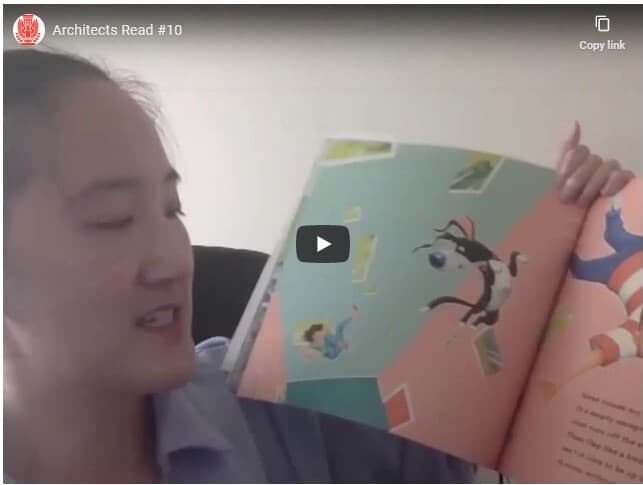Online Learning for Kids
The Washington Architectural Foundation remains commited to providing young people in the Washington area with early design education. Whether home from school trying to stay busy, or seeking a fun and creative activity as a positive distraction, these online learning resources will encourage a discovery of the local built environment.
| For Kids Kids can explore their home environment with the below architecture challenges. Home Building Materials Hunt Join us to learn about being an architect! Our Interview with an Architect series illustrates what architects do and how their work affects the community. |
 | For Teens Develop your CAD skills—try SketchUp! for free! For Families or Kids of All Ages
|
Partner Programs
Architecture at Home from the AIA NY Center for Architecture.
Make Your Own Art Bot
DIY Victorian Virtual Reality
Angkor Wat Lesson Plan
Tower Tube Lesson Activity
DIY Cardboard House - Scandinavian | Craft Ideas for Kids on Box Yourself
Architectural Challenges for Kids
Post your drawings on Instagram and tag us @DistrictArchCenter
Suggested age group: 10-14
Patterns in Design
Neighborhood Design
Identifying Shapes
Draw Your Space
Tape Resist Art
Patterns in Design
In this activity, participants use nature and/or the built environment around them to explore texture, pattern, and geometry.
Topics: Visual Art, Math, Science
Materials and Resources:
Pencil
Paper
Optional: Straightedge ruler, colored pencils/markers/crayons/colored pens
Explore and Design
Part I:
Look for at least (3) examples of pattern and repetition either outdoors (in your yard or at a park) or indoors (in your home or on the outside of your building).
Explore and make observations of the geometric shapes that create different patterns around you. Make a few sketches or notes with your pencil and paper of the items you have identified that create a pattern. What shapes make up each example?
Study each of these patterns. What do you see? Can you identify the material it is made of? Are any of the patterns symmetrical/asymmetrical?
Part II:
With your pencil and paper, use a shape that you found in nature/at home to create your own pattern. Fill your sheet of paper from edge to edge with your pattern.
Things to consider: What happens if you use different sizes of this same shape on the same piece of paper? Can you add another geometric shape into your pattern? Can you identify any symmetry or asymmetry in your pattern?
Continued Activity
On a neighborhood walk, find examples of symmetry and asymmetry in building facades. Several buildings will have a mixture of both qualities.
Questions:
How does symmetry and asymmetry influence design?
How do repetition and pattern affect the way we look at a building?
What is the relationship between nature/buildings and geometry?
How can you use geometry to create innovative designs?
Definitions:
Pattern – an orderly sequence consisting of a number of repeated or complementary elements; a repetition of a form or element to create a design
Symmetrical – similar in form or arrangement on both sides when folded in half ( or sides of a dividing line or plane)
Asymmetrical – irregular; don’t match up perfectly when folded in half (or sides of a diving line or plane)
Façade – the front of a building; part of a building facing a street, courtyard, etc.
Neighborhood Design
Topics:
Visual Arts and Social Studies
Materials:
Paper
Pencil
Optional: colored pencils or markers
Explore and Design
- Identify places and things that make your neighborhood (building-what kind, parks, houses, etc). To help you visualize your neighborhood you can go for a walk or use google maps
- From your observations draw your current neighborhood, include what you saw
- Decide if your neighborhood needs something, what would you like to add to it and draw it in
- List out how your addition would help you and your community
Identifying Shapes
Topics:
Geometry, Visual Arts
Materials:
Paper
Pencil
Scissors
Optional: construction paper or other color paper,
markers, colored pencils, glue
Explore and Design:
- Go for a walk around your neighborhood or look around your room.
- Identify the shapes you see (Example: Are the buildings around you square or are they rectangular? Does the building have more than one shape? Maybe it is a square and a triangle)
- Draw out your observations, all the shapes you see.
- See if you can identify any patterns.
- Cut out the shapes using whatever color or patterned paper you like. Rearrange them into new buildings, creatively redesigning the shape of your neighborhood. You can either glue everything down for a collage or keep redesigning.
Draw Your Space
Topics:
Visual Arts
Materials:
Paper
Pencil
Optional: colored pencils, markers, pens
Explore and Design:
- Time to explore your space, pick a room in your home to draw. Include all the furniture. Once you draw the room and all the furniture identify one item that you think could be multi-purpose. (example-bed, dresser, desk)
- Time to redraw that piece to feature your new design. If it is a bed maybe add some storage, be creative and have fun adding and playing around with your designs!
Tape Resist Art
Materials:
Painter’s tape
Various colors of sidewalk chalk
Activity:
Create your design. Either draw it out first on paper or free hand it by creating a design with your tape right on the sidewalk. Once your tape is laid out start coloring in each shape with various colors of chalk. When you are done remove the tape. The negative space created by the tape will give you new patterns and designs. Don’t forget to snap a picture of your work and tag us on Instagram! @DistrictArchCenter
This program is supported by the DC Commission on the Arts and Humanities.
Made possible through the support of the Hattie M. Strong Foundation.

